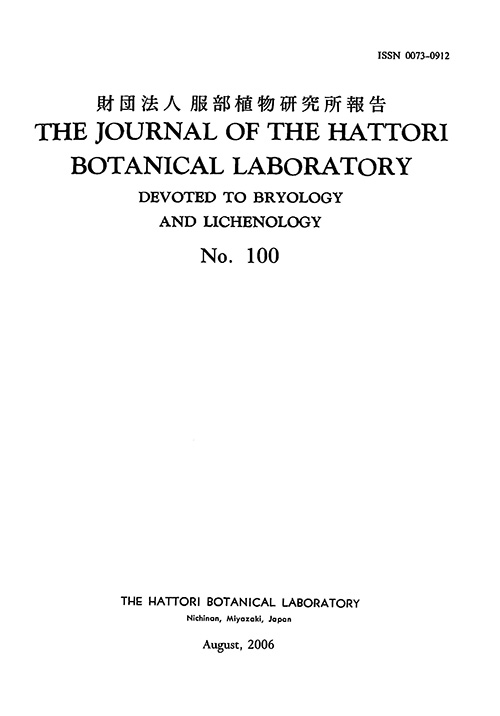Volume 62
Displaying 1-21 of 21 articles from this issue
- |<
- <
- 1
- >
- >|
-
1987 Volume 62 Pages 1-100
Published: June 22, 1987
Released on J-STAGE: August 04, 2021
Download PDF (39670K) -
1987 Volume 62 Pages 101-109
Published: June 22, 1987
Released on J-STAGE: August 04, 2021
Download PDF (3285K) -
1987 Volume 62 Pages 111-119
Published: June 22, 1987
Released on J-STAGE: August 04, 2021
Download PDF (3241K) -
1987 Volume 62 Pages 121-136
Published: June 22, 1987
Released on J-STAGE: August 04, 2021
Download PDF (6458K) -
1987 Volume 62 Pages 137-150
Published: June 22, 1987
Released on J-STAGE: August 04, 2021
Download PDF (4761K) -
1987 Volume 62 Pages 151-160
Published: June 22, 1987
Released on J-STAGE: August 04, 2021
Download PDF (3292K) -
1987 Volume 62 Pages 161-182
Published: June 22, 1987
Released on J-STAGE: August 04, 2021
Download PDF (9227K) -
1987 Volume 62 Pages 183-190
Published: June 22, 1987
Released on J-STAGE: August 04, 2021
Download PDF (2667K) -
1987 Volume 62 Pages 191-200
Published: June 22, 1987
Released on J-STAGE: August 04, 2021
Download PDF (3633K) -
1987 Volume 62 Pages 201-203
Published: June 22, 1987
Released on J-STAGE: August 04, 2021
Download PDF (919K) -
1987 Volume 62 Pages 205-267
Published: June 22, 1987
Released on J-STAGE: August 04, 2021
Download PDF (26967K) -
1987 Volume 62 Pages 269-280
Published: June 22, 1987
Released on J-STAGE: August 04, 2021
Download PDF (4072K) -
1987 Volume 62 Pages 281-288
Published: June 22, 1987
Released on J-STAGE: August 04, 2021
Download PDF (3616K) -
1987 Volume 62 Pages 289-298
Published: June 22, 1987
Released on J-STAGE: August 04, 2021
Download PDF (3812K) -
1987 Volume 62 Pages 299-329
Published: June 22, 1987
Released on J-STAGE: August 04, 2021
Download PDF (14014K) -
1987 Volume 62 Pages 331-338
Published: June 22, 1987
Released on J-STAGE: August 04, 2021
Download PDF (2922K) -
1987 Volume 62 Pages 339-360
Published: June 22, 1987
Released on J-STAGE: August 04, 2021
Download PDF (8519K) -
1987 Volume 62 Pages 361-366
Published: June 22, 1987
Released on J-STAGE: August 04, 2021
Download PDF (2009K) -
1987 Volume 62 Pages 367-386
Published: June 22, 1987
Released on J-STAGE: August 04, 2021
Download PDF (9136K) -
1987 Volume 62 Pages 387-415
Published: June 22, 1987
Released on J-STAGE: August 04, 2021
Download PDF (12728K) -
1987 Volume 62 Pages 417-483
Published: June 22, 1987
Released on J-STAGE: August 04, 2021
Download PDF (26137K)
- |<
- <
- 1
- >
- >|
